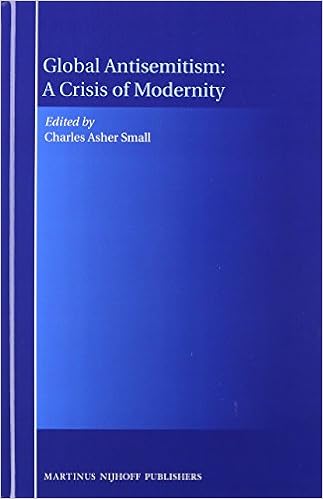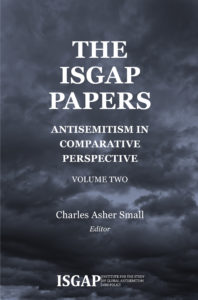They say that all is fair in love and war, so you can't expect a country that's been surrounded by enemies for over 65 years to always play nice. Here's a fascinating book that will tell you how a tiny country kept itself from being destroyed by using mostly its wits. Whatever you may think about Israel, you've got to admit that from its inception, the odds were against it. And you've also got to give it credit for surviving while being outnumbered by over 100 to 1 from the onset. Under those conditions, the only way to keep afloat is to outsmart your enemy, and that's what this book is about. The major focus here is on the technological side - that being things like computers, electronics and advanced weaponry - and how one division in particular had a large hand in it all. That unit is called 8200 which is part of the Intelligence Division of the IDF.
But this book isn't only about one army unit and its effect on the IDF. This book also delves past that and into the influence that the graduates from 8200 have had in helping Israel to become one of the biggest innovators in the Hi-Tech business world today. And we're talking about really big strides in technology that are affecting the whole globe. For instance - ever send or receive an SMS message on your cell phone? Ever take part in a video conference? Perhaps you sent a song or perhaps a picture to someone's cell? What about that great, yet simple invention - voice mail? Well, there you go - those are some of the things that ex-8200 soldiers invented. And the list goes on.
One of the more interesting facets that this book investigates is why such a large concentration of young men and women achieved so much in their short lives. One of the answers that the author gives is similar to the old adage "necessity is the mother of invention". When your existence is at stake and any errors in judgment could cost the lives of both your fellow soldiers and innocent civilians - if not your whole country - then there's just no room for conventional thinking. In fact, you've got to find solutions to problems that haven't even cropped up yet! The IDF set out to find, sow and nurture and grow the minds that could do this, and of course the harvest from this is going to be exceptional. This developmental process is what this book is all about.
It should be noted that author Stacy Perman wrote this in a very pro-Israel prospective. This may disturb some readers, and I thought you should be warned. Mind you, she does seem to have a slightly left-wing bent here, as - for instance - she describes the then PM Ariel Sharon with words like 'hawkish', and seems far more enamored of the outspokenly 'dovish' Shimon Peres. You should also know that you're not going to learn any previously unrevealed secrets from this book. Everything in this book has been cleared by the IDF, and very few military things you'll read will be news to you. However, what will be enlightening is the methods used, and the innovations that came from those same young people who developed these methods.
You'll also find that Perman's style here has a very fictional flavor to it. In fact, some of the accounts of historic triumphs in Israeli espionage sound like excerpts from a joint effort between John Le Carre and Robert Ludlum. So you're not going to feel like you're being bombarded by boring statistics and list of bland information. Take this quote as an example, so you can see what I mean:
 "In the inky darkness of the pre-dawn hours, the Red Sea had turned choppy. The sun had yet to bathe the sea, known in Arabic as 'Al Bahr Al Ahmar', in its winter light. Fishing boats moored in the waters surrounded by Yemen, Saudi Arabia, and the Sudan rocked in the stormy darkness. An old, blue cargo ship, sailing under the flag of the kingdom of Tonga, cruised northward, making its way toward the Suez Canal, while on board most of its 13-man crew slept."
"In the inky darkness of the pre-dawn hours, the Red Sea had turned choppy. The sun had yet to bathe the sea, known in Arabic as 'Al Bahr Al Ahmar', in its winter light. Fishing boats moored in the waters surrounded by Yemen, Saudi Arabia, and the Sudan rocked in the stormy darkness. An old, blue cargo ship, sailing under the flag of the kingdom of Tonga, cruised northward, making its way toward the Suez Canal, while on board most of its 13-man crew slept."
By the way, this is one of the first times that I've found the preface and acknowledgments to be equally as fascinating as the body of the book. What's more, the endnotes are just as interesting.
I must add at this point that I felt a touch cheated when I finished reading this book. I was hoping to learn much more about the start-up companies and amazing products that these 8200 graduates have gone on to develop. Instead, I feel she gave us a touch too much about the military side of the story, and not quite enough about the entrepreneurial side of the take. She did, however, handle the business side as even-handedly as possible, by also including how the bust in the Hi-Tech industry affected these fledgling companies. Well, hey, nobody's perfect, right? We're talking about inventors and innovators here, and we all know that this type of creative genius doesn't always make for financial wizards as well - if ever.
In sum - I found this book to be very well written, very carefully researched and totally fascinating on a subject that I most likely would have never read about, had my son not heard of the book and insisted I buy it. Mind you, it is slightly biased on the pro-Israel side with a touch of a left-wing slant. But for a non-fiction book on business, this reads more like the history of Ian Fleming's development of gadgets invented by Q, with some scintillating episodes that any 'double-oh' agent would have been proud to have been a part of. And at only 256 pages, it's not going to take a long time to read, either. This is one book on spying that doesn't, and shouldn't be kept a secret - four out of five stars and highly recommended!
















